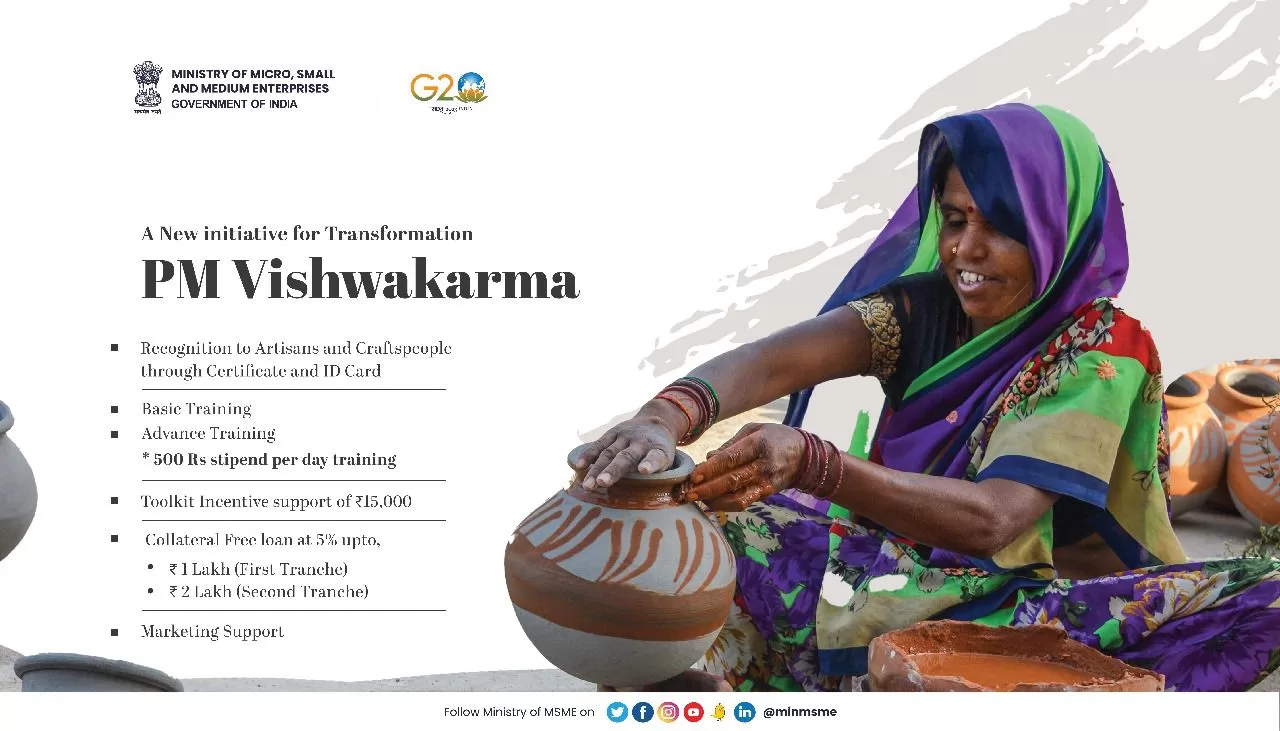
Smaller is safer: MSME NPA rate at 12.5% better than large corporates at 19.7%.
Contrary to popular belief, the largely unorganized and underserved MSME sector turned out to be a better bet for lending, than large corporates. At a NPA rate of 12.5% they were significantly better than large corporates who had a NPA rate of 19.7%. The total lending of ₹64.45 lakh crore (as of January 2020) to businesses in India, of which MSMEs accounted for ₹17.75-lakh-crore credit exposure.
The Deployment of Gross Bank Credit to MSMEs and outstanding as on 31 Dec, 2021 was Rs. 4,47,566 crores, up from Rs. 3,87,220 crores as on 26 Mar, 2021. The MSME sector contributes 30% to the national GDP and 45.9% to the total exports by the country.However, despite this impressive numbers Brick-and-mortar banks cover hardly 15% of the total MSMEs in India and a large section of this segment remains out of the purview of banking network in the country. Hence, it has been found that promoters of more than 22 million MSMEs in India must depend on their own funds or loans from friends and families for the capital requirement. Such sources remain often inadequate or expensive.
These are some major findings of a report titled MICRO, SMALL AND MEDIUM ENTERPRISES (MSMES): CHANGING LANDSCAPE released by Infomerics Valuation and Rating Pvt Ltd., the well-known SEBI-registered and RBI-accredited financial services credit rating company.
The report also mentions that MSME segment in India is facing a huge addressable credit gap which is Rs. 25.8 trillion & growing 37% CAGR. Total addressable market demand by the MSME sector is approximately Rs. 37 trillion. Banks, other institutions, and NBFCs supplies to the MSME sector are about Rs. 10.9 trillion.
As on 24 February 2022, there was 73,42,646 Udyam Registration, 42,660 projects (PMEGP), 5,97,569 proposals approved (CGTMSE), 2,790 Khadi Institutions (KVIC), 486 MSE CDP (CFC/ID Projects) and 3500 Export Target (Coir Board).
Over 6 crore MSME units in India employ about 11 crore people. There are many women-led enterprises in rural, urban, and semi-urban areas that contribute over 20% of the total MSMEs with the scope for acting as a catalyst for economic growth across the geographic, social, and cultural strata of the country.
Government interventions
The Government is taking several measures to minimize the credit gap in MSMEs operating in the informal and unorganized sector the ambit of formal lending through registration under ‘Udyam Portal’. The enterprises registering through this portal can avail the benefits of schemes of the Ministry of MSMEs and Priority Sector Lending (PSL) from banks.
Given the severe resource and financial constraints afflicting the sector, enterprises in the MSME segment need institutional debt and equity. But debt from Banks/NBFCs requires collateral, which sometimes becomes difficult for early-stage MSMEs and entrepreneurs.
The Government of India has initiated additional support of ₹. 1500 million in the existing kitty (₹3000 million) of credit guarantee funds (28 June 2021), access to non-bank credit, and expansion of eligible sectors (retail and wholesale trade with 2. 5 crores enterprises) to MSMEs.
The Union Budget 2022-23 provided a long-term vision for the MSME sector to flourish in the future. The digitization process in the sector is gaining momentum and now the sector needs to deliver and sell its products swiftly and efficiently. The budgetary allocation for MSMEs rose from Rs. 15,699.65 crores in FY 2021-22 to Rs. 21,422 in FY 2022-23 which is up by 26.71 %. The 59-minute loan portal was launched to enable easy access to credit for MSMEs, and in-principle approval of loans up to Rs. 1 crore. Until 31st December 2021, a total of 2,37,027 loans involving Rs. 79,527 crores were sanctioned. Further, 2,20,664 numbers of loans, involving Rs. 64,776 crores were disbursed.
Challenges
MSMEs face manifold legacy issues regarding information asymmetry, unregistered firms, lack of timely and sufficient credit availability, delayed receivables, lack of exit policy, and obsolete technology among others. Lenders are now increasingly resorting to digitization. Such developments have led to the emergence of digital financiers (often fintech start-ups) providing online loans based on digital information and artificial intelligence.
A more nuanced framework of pooling database could collate finance performance, loan details, and default data across lenders to develop more robust credit models, e.g., Japan’s “Credit Risk Database” (CRD) via which member banks share MSME data related to financial performance and default rates/statistics.
The way ahead
The Government should focus on the formidable potential of enhancing the MSMEs’ share in the total export and GDP of the country. MSMEs can contribute to higher exports and GDP. There are more than 63 million MSMEs in India covering 80% of the industries in the country. MSMEs alone accounts for 30% of GDP and 45.9% of total exports of the country. The government through its policy support must explore the road ahead for the MSMEs to be a part of global value chains (GVCs) and attempt global integration. Going ahead, demand, scale, funding, delivery capacity, and productivity are of strategic significance for the steady growth and structural transformation of MSMEs in India.
Overcoming uncertainties in MSMEs through policy engagements requires a renewed thrust on financial inclusion, Fintech, risk assessment for MSMEs, empowering MSMEs through policies, industrial collaborations, and capacity building training.




